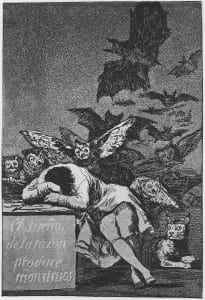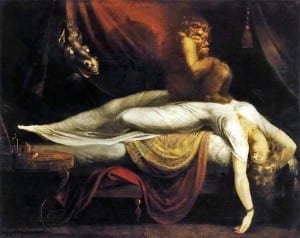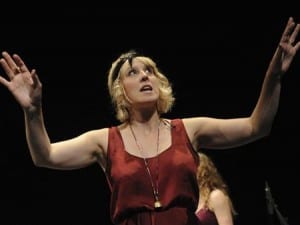*Appendices The Gothic Revival: From Context to Contemporary
This week we have been exploring the short Gothic stories of Angela horror, specifically her adaptations of fairytales in her 1979 work The Bloody Chamber. The potency of the Gothic genre has extended from the Gothic revival of the eighteenth century to twentieth century modern fiction. In this blog we aim to establish context and inspirations from the Gothic genre which we can build through our theatrical adaptations of fairytale.
(Goya’s ‘Sleep of Reason’ and Henry Fuseli’s ‘The Nightmare’)
Angela Carter – Gothic horror and conventions are taken to the extreme, the pinnacle of heightened emotions contrasted with childhood innocence. This links to the context of the eighteenth century Gothic revival, where “middle class readers, safely tucked into their stable and unthreatened the social positions, could feel secure enough to cultivate imaginary fears and fantasies, in the same way that a child may do, reading horror stories and experiencing the delicious thrill while apparently immune from real danger.” (Gothic Tradition, David Stevens, p10)
This ties in with the genre of sensibility which ran parallel to the Gothic revival. This was the move away from rationalism and towards heightened emotions concentrating on fantasy and escapism. There was a sense that “over-reliance on reason could rob human experience of its essential flavour.”(Gothic Tradition, David Stevens, p10)
Gothic and the Child
“The link between the Gothic and the experience of childhood is, perhaps, an especially strong one … many adults remember formative reading experiences in which fear played a compelling part, at once terrifying in its intensity and strangely fascinating and attractive. So-called ‘fairy tales’, clearly, are excellent examples of this perennial fascination – it is hard to think of a fairy tale which does not feature some form of darkness or evil” (Gothic Tradition, David Stevens p32-33).
(Word Count: 314)
Works Cited:
Stevens, David (2000) The Gothic Tradition, Cambridge University Press.
Carter, Angela (1995) The Bloody Chamber, London: Vintage Classics.


